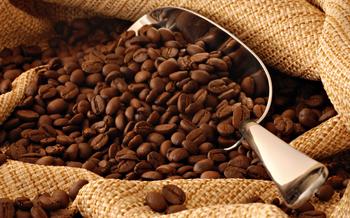Coffee bean selection method manual selection of "good beans" and "bad beans"
I agree that apples don't taste different because of their size, but when it comes to roasting coffee beans, "it's all heated anyway, and it doesn't matter if the coffee beans are different in size." I can't agree. Coffee beans harvested from the same tree, regardless of particle size, mature or immature, will produce uneven baked products if they are all baked in the same pot.

When thick beans are baked with thin beans, the heat permeability of beans with thick beans is poor, and the center (the part of the bean that has not been removed) will be in a "cored" state that cannot be baked. When cooking spaghetti, it will be "cored" in order to have a moderate taste; but the "cored" state is only allowed to exist in the world of spaghetti, and the world of coffee does not work.
The appearance of the "cored" coffee can not be seen, only the beautiful surface of baked beans can be seen, but it is clear when cut open. The beans are divided into baked and unbaked parts. The coffee liquid extracted from the cored coffee will have a strong smell of choking throat.
To get back to the point, when choosing raw coffee beans, beans with uniform shape, thickness, size, color, central line and so on are all the best. In short, average beans are good beans. Unfortunately, such beans are extremely rare.
People often ask me, "what tastes better, big granulated beans or small granulated beans?"
"Coffee beans with large particles are highly valued in the place of production according to their size." It is also said that the French taste of the sieve size (coffee bean size) has nothing to do with it. Now the Nordic countries, which are advanced coffee countries, purchase the most advanced coffee beans in Brazil and other places, mainly buying small pellet beans with a sieve size of 13-16. They avoid buying high-priced large granulated beans and buy cheap small ones instead, perhaps because they value quality over reputation.
But strictly speaking, large granulated coffee beans have a better flavor. In fact, the beans collected from the same coffee tree are baked and extracted, and the taste can be obviously compared after the cup test. Beans with large grains and smooth growth taste better.
When it comes to large-grained coffee beans, there are often high-quality beans like Marago Gippe (large granulated beans above sieve 19, also known as beans), which are twice as large as ordinary beans, which can cause uneven baking. therefore, it is recommended to pick out by hand in advance: but this is not to pick out defective beans, but to gather large grains of beans together and bake them separately.
When it comes to baking, rather than paying attention to the relationship between bean size and taste, the consistency of bean size is more important. Beans of different sizes should be separated from each other and should not be mixed and baked. Otherwise, it will inevitably lead to uneven baking results.
Similarly, it is better to have the same color of beans. The colors of raw beans are cyan, brown and other colors, and the color of beans represents water content, so it is easier to bake beans with the same color. Generally speaking, cyan and green indicate more moisture, while brown almost white represents less moisture.
Then there is the shape of the beans, and the meat should be thick. Even if the grains of beans are large, those with thin meat tend to taste thin. The flavor is rich and deep, generally speaking, only the fleshy coffee beans produced in the highlands. Kenya, Colombia, Tanzania and other Elaraby plus washable coffee beans are classified as "Colombian fresh and bright coffee" by the New York market; the meat is thick and the moisture content is high, so it is not easy to heat transfer in the center when roasting, but through excessive baking, it can lead to rich and varied flavor.
The last thing to mention is the central line (the longitudinal rill in the center of the coffee bean). Beans with a clear and clear central line are of high quality. In addition, the silver skin covered on its surface is literally silver. Most of the tea-brown ones with silver skin are defective, except for the well-managed natural drying beans.
Important Notice :
前街咖啡 FrontStreet Coffee has moved to new addredd:
FrontStreet Coffee Address: 315,Donghua East Road,GuangZhou
Tel:020 38364473
- Prev

Basic knowledge of Italian coffee
As for the origin of coffee flower, in fact, there has been no very clear literature, only know that in Europe and America at that time, coffee flower is in the coffee show, the display of high difficulty professional technology, and such innovative skills, the display of high difficulty technology, greatly shocked the coffee industry at that time, from the beginning has been the public attention. All of them are deeply affected by coffee.
- Next

Freshness is the way to determine the freshness of coffee beans.
There are three steps: smell, see, and peel. Smell: put the coffee beans close to the nose and smell them deeply to see if you can clearly smell the aroma of the coffee beans. If so, the coffee beans are fresh enough. On the contrary, if the aroma is weak, or has begun to appear greasy, it means that the coffee beans are not fresh at all. This kind of coffee beans, no matter how much effort you put into grinding and going
Related
- What is the meaning of lactic acid fermentation with coffee bean treatment?
- How to judge the state of foam by sound?
- How does the latte pull out the unicorn pattern? Come to get for a little trick to improve the flower pull!
- Will flower pulling affect the taste of the latte?
- Do you know the history of coffee?
- The difference between honey treatment and sun washing what is raisin honey treatment?
- What kind of milk can a novice use to make coffee foam to keep the foam longer? The correct method and skills of milking tutorial sharing
- Why do washed coffee beans taste sour? Flavor characteristics of washed Coffee
- Introduction to the skill of how to practice the size and height of water injection around the circle of hand-brewed coffee
- How do beginners practice coffee flower drawing from scratch?

